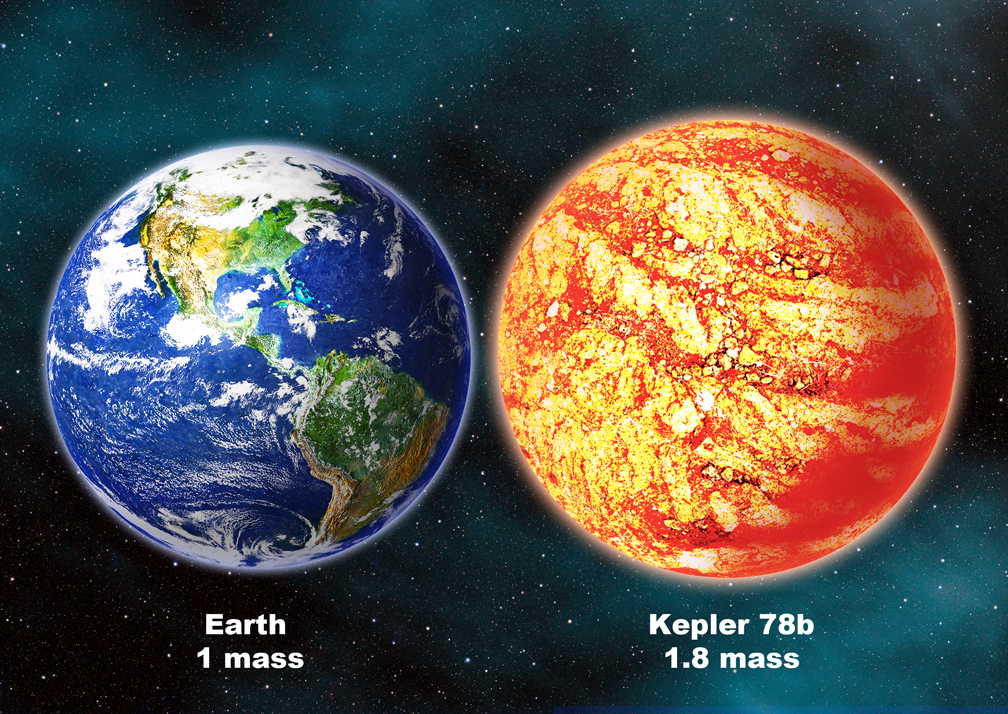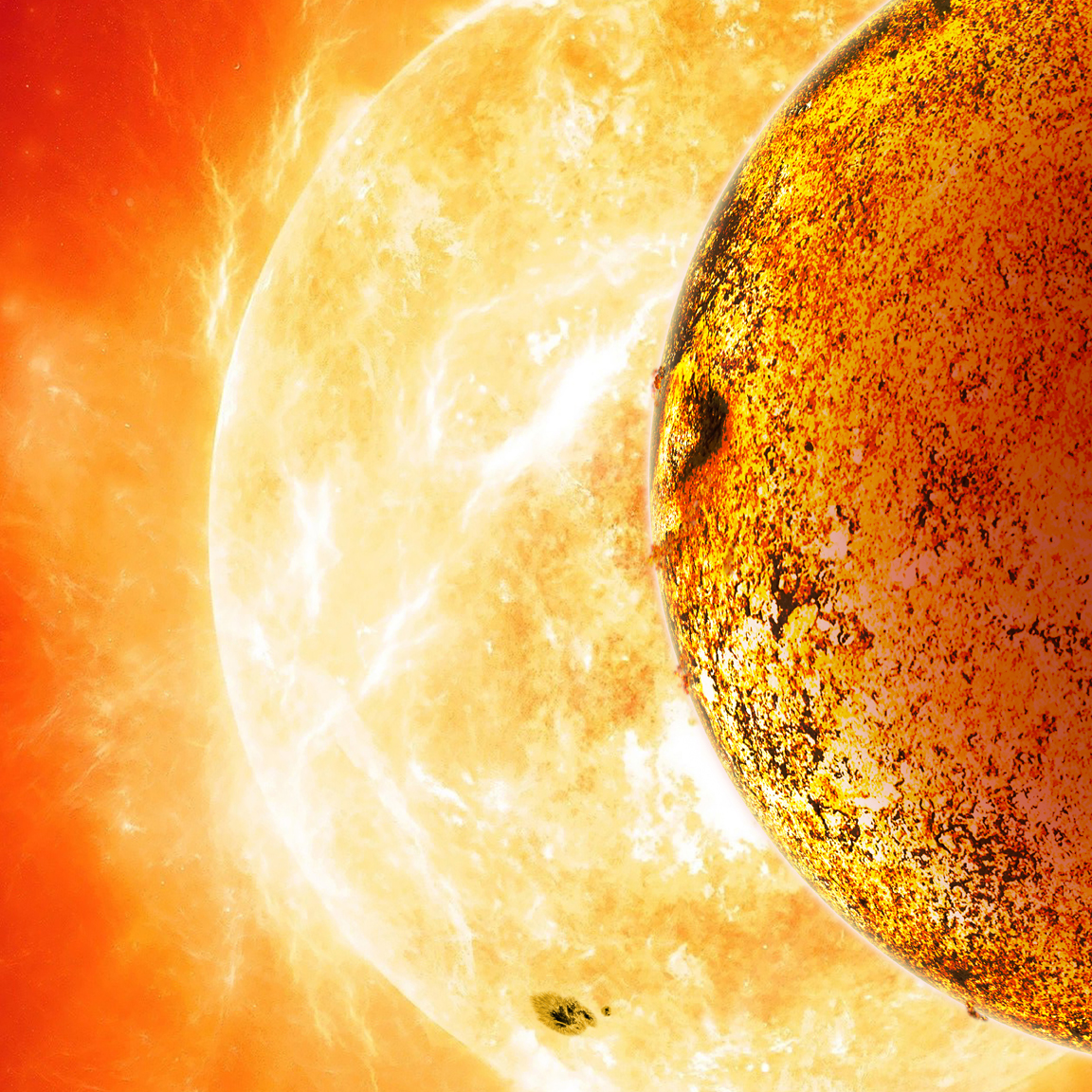Image List
-

This diagram illustrates the tight orbit of Kepler-78b, which orbits its star every 8.5 hours at a distance of less than a million miles. It is only 2.7 stellar radii from the center of the star, or 1.7 stellar radii from the star's surface.
David A. Aguilar (CfA) -

This illustration compares our Earth with the newly confirmed lava planet Kepler-78b. Kepler-78b is about 20 percent larger than Earth, with a diameter of 9,200 miles, and weighs roughly 1.8 times as much as Earth.
David A. Aguilar (CfA) -

Kepler-78b is a planet that shouldn't exist. This scorching lava world, shown here in anartist's conception, circles its star every eight and a half hours at a distance of less than one million miles. According to current theories of planet formation, it couldn't have formed so close to its star, nor could it have moved there.
David A. Aguilar (CfA)